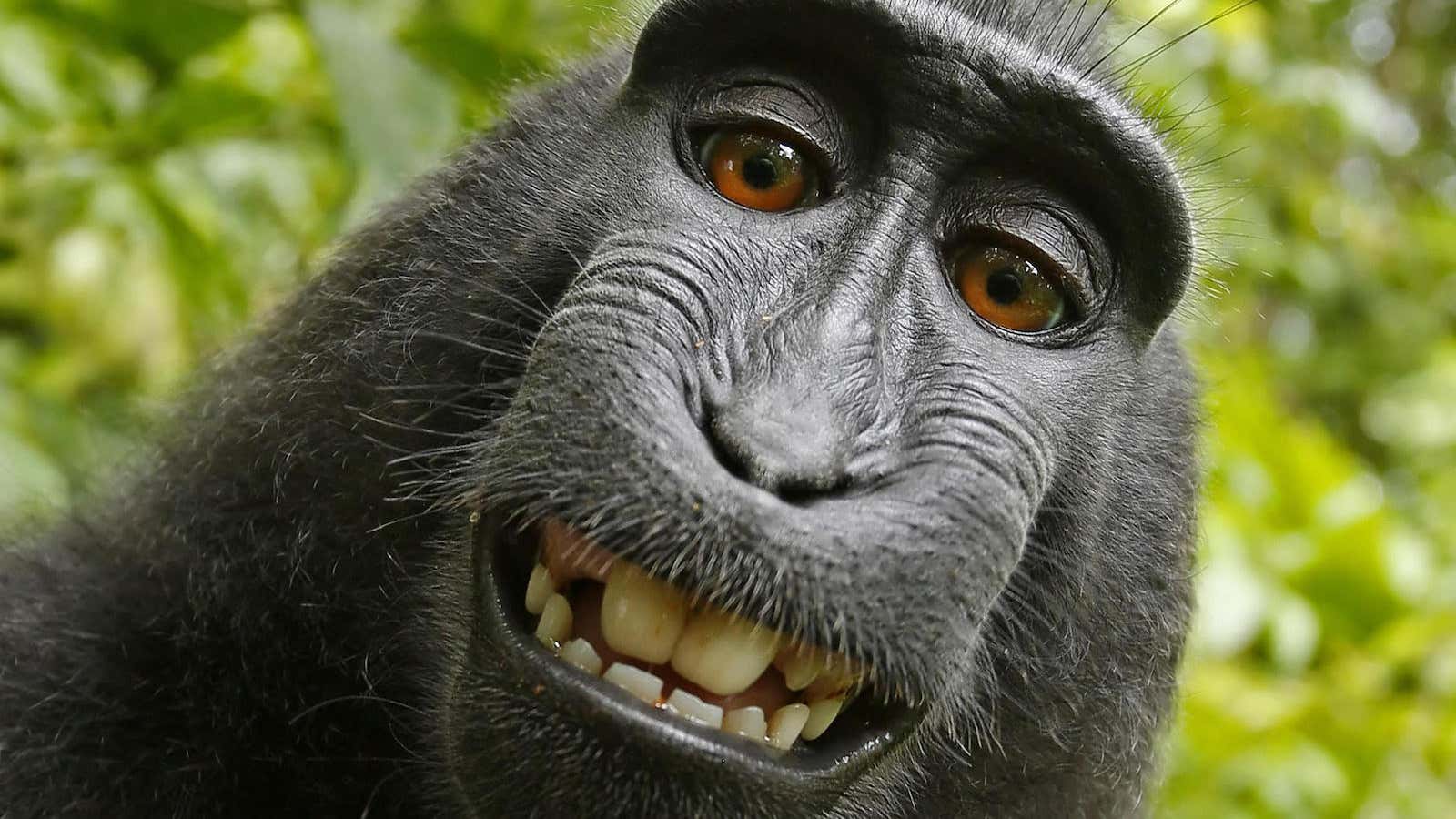A few years ago in an Indonesian forest, a crested macaque monkey named Naruto picked up an unattended camera and took several photos of himself. The resulting monkey selfies have become the center of a debate concerning the overlap of intellectual property law and animal rights.
The owner of the camera, photographer David J. Slater, has been selling copies of the pictures for profit. He and his company, Wildlife Personalities, both claim copyright ownership of the photos, even though Slater admits that Naruto took the photos himself in 2011. PETA has filed a lawsuit on Naruto’s behalf, asking the courts to recognize Naruto as the owner of the copyright to the photos. I submitted a brief on behalf of primatologist Agustín Fuentes, a professor at the University of Notre Dame, that supports Naruto’s case. In Dec. 2014, the United States Copyright Office declared that US copyright laws don’t apply to non-humans, which makes this case particularly ripe for review.
If the court rules in Naruto’s favor, PETA would manage the copyright of the photos on behalf of Naruto and license them for commercial use. All royalties earned from these pictures would be specifically used for Naruto’s benefit and that of his extended family, who are being impacted by encroaching human development. PETA is not asking for any compensation.
Animals can be the authors of valuable works of art, and there is a market for art created by animals. In fact, many zoos raise money by selling paintings created by the animals—just recently, the Lincoln Children’s Zoo in Nebraska sold 116 pieces of art in its semi-annual Animal Art event.
Research supports PETA’s claim that Naruto satisfies the basic requirements for authorship. Macaques are distinctive—even among monkeys—in their high degree of intelligence and complex sociality. They are particularity characterized by an extremely well-developed capacity for object manipulation, and a strong tendency to engage in tactile behavior. They understand the correlation between cause and effect, such as that by hitting a snail shell with a rock, they can crack it open and retrieve the snail. They also have individual personalities, and their unique characteristics lead to their capacity for idiosyncratic, self-oriented, highly intentional social behavior.
As researchers have worked in the area where Naruto and his family live for a long time, it is extremely likely that he had seen humans manipulate cameras and heard the sounds they make. As is common in macaques, he probably became curious about them and wanted to investigate on his own. With a camera in hand, he could recognize the association between his actions and the shutter movement and sound. Unlike a cat who walks across your keyboard and creates a series of letters and symbols on the page, these photographs were not created by accident— they were the result of Naruto’s specific and intentional manipulation of the camera. Whether or not the images that were produced were Naruto’s goal, all of the actions needed to produce them were his—they were deliberate and in keeping with his personality.
American jurisprudence has consistently evolved with the advancement of science and technology. Two examples of this have been extending the US Constitution to technological advances that its original authors could never imagine, such as the use of GPS tracking, and using empirical data and biological evidence in determining culpability of crime.
In this case, the only fair interpretation of the Copyright Act is that the entity responsible for creating the photos—Naruto—is therefore the author of the photos. And if Naruto is the author, he is entitled to the protections afforded to others under the Copyright Act.
If this lawsuit succeeds, it will be the first time that a non-human animal is declared the owner of property. But even if the court does not decide in Naruto’s favor, it’s groundbreaking cases like these that challenge the status quo and pave the way for future litigation that will afford non-human animals the fundamental rights they deserve.
